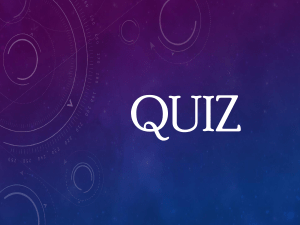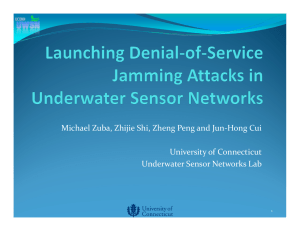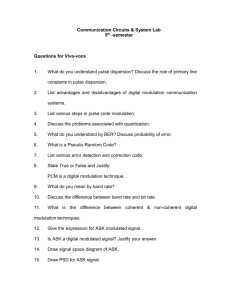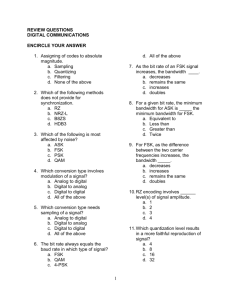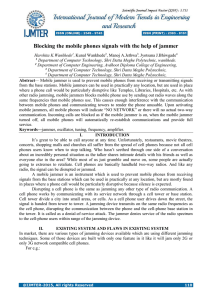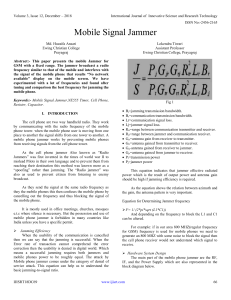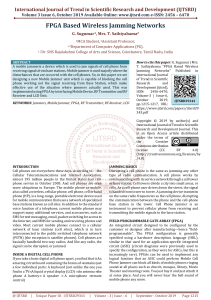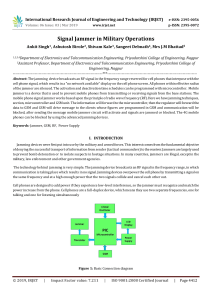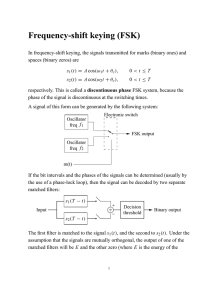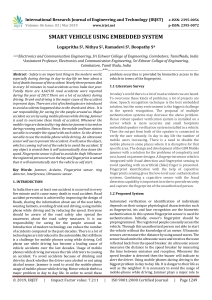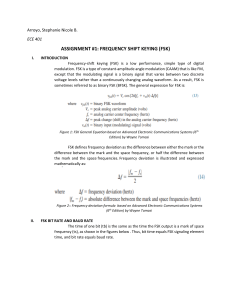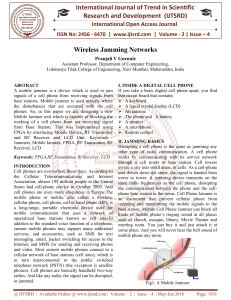King Fahd University of Petroleum & Minerals Quiz 5: Spread Spectrum
advertisement
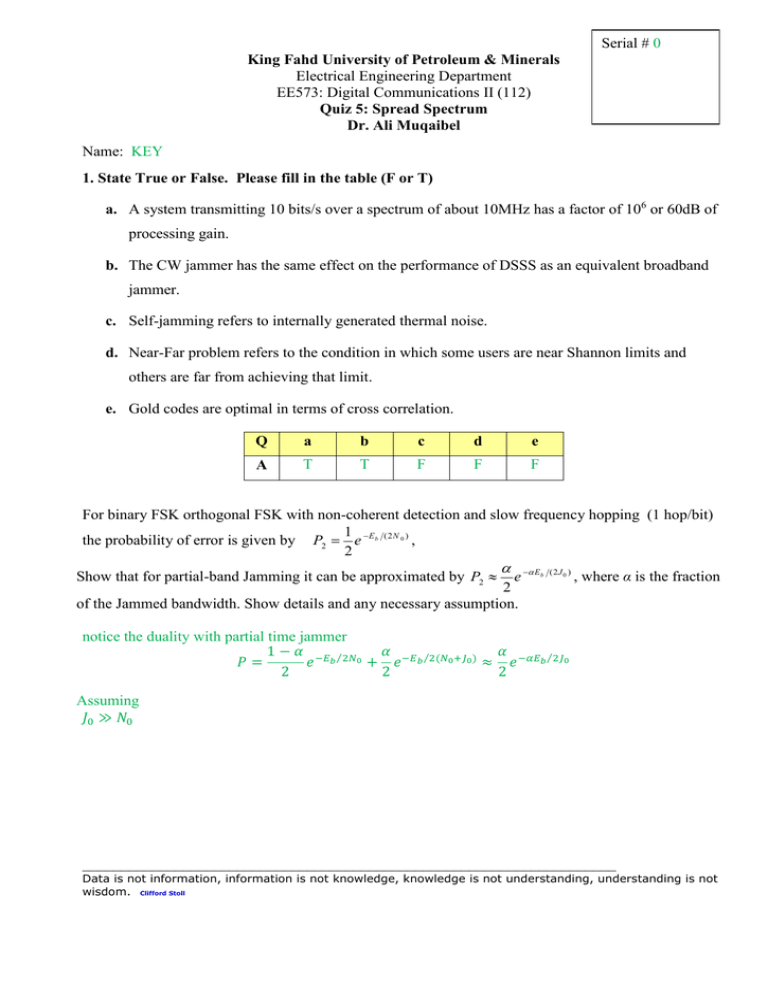
Serial # 0 King Fahd University of Petroleum & Minerals Electrical Engineering Department EE573: Digital Communications II (112) Quiz 5: Spread Spectrum Dr. Ali Muqaibel Name: KEY 1. State True or False. Please fill in the table (F or T) a. A system transmitting 10 bits/s over a spectrum of about 10MHz has a factor of 106 or 60dB of processing gain. b. The CW jammer has the same effect on the performance of DSSS as an equivalent broadband jammer. c. Self-jamming refers to internally generated thermal noise. d. Near-Far problem refers to the condition in which some users are near Shannon limits and others are far from achieving that limit. e. Gold codes are optimal in terms of cross correlation. Q a b c d e A T T F F F For binary FSK orthogonal FSK with non-coherent detection and slow frequency hopping (1 hop/bit) 1 the probability of error is given by P2 e E b (2 N 0 ) , 2 Show that for partial-band Jamming it can be approximated by P2 e Eb (2J 0 ) , where α is the fraction 2 of the Jammed bandwidth. Show details and any necessary assumption. notice the duality with partial time jammer 1 − 𝛼 −𝐸 ⁄2𝑁 𝛼 𝛼 𝑃= 𝑒 𝑏 0 + 𝑒 −𝐸𝑏⁄2(𝑁0 +𝐽0 ) ≈ 𝑒 −𝛼𝐸𝑏⁄2𝐽0 2 2 2 Assuming 𝐽0 ≫ 𝑁0 _____________________________________________________________________ Data is not information, information is not knowledge, knowledge is not understanding, understanding is not wisdom. Clifford Stoll
